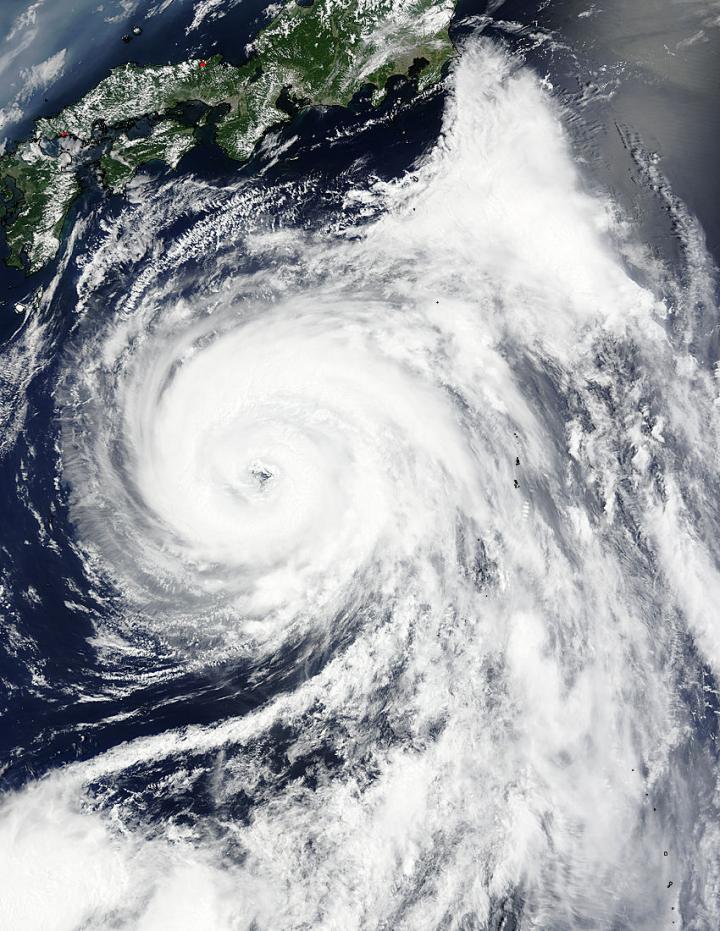NASA sees a ragged eye in Typhoon Nangka

NASA's Terra satellite captured this visible image of Typhoon Nangka nearing Japan on July 15 at 01:25 UTC (July 14 at 9:25 p.m. EDT). Credits: NASA Goddard MODIS Rapid Response Team
The Moderate Resolution Imaging Spectroradiometer or MODIS instrument aboard NASA's Terra satellite captured a visible image of Typhoon Nangka nearing Japan on July 15 at 01:25 UTC (July 14 at 9:25 p.m. EDT).
The image showed a ragged 15-nautical-mile-wide eye surrounded by thick bands of powerful thunderstorms.
At 1500 UTC (11 a.m. EDT), Nangka's maximum sustained winds were near 80 knots (92.0 mph/148.2 kph).
It was centered near 29.3 North and 135.4 East about 375 nautical miles (431.5 miles/694 km) south-southeast of Iwakuni, Japan. Nangka has tracked north-northwestward at 13 knots (15 mph/24 kph).
For warnings and watches from the Japan Meteorological Agency, visit: http://www.
The Joint Typhoon Warning Center forecast calls for Nangka to weaken and track north-northwestward to northwestward toward Japan.
Media Contact
All latest news from the category: Earth Sciences
Earth Sciences (also referred to as Geosciences), which deals with basic issues surrounding our planet, plays a vital role in the area of energy and raw materials supply.
Earth Sciences comprises subjects such as geology, geography, geological informatics, paleontology, mineralogy, petrography, crystallography, geophysics, geodesy, glaciology, cartography, photogrammetry, meteorology and seismology, early-warning systems, earthquake research and polar research.
Newest articles

Trotting robots reveal emergence of animal gait transitions
A four-legged robot trained with machine learning by EPFL researchers has learned to avoid falls by spontaneously switching between walking, trotting, and pronking – a milestone for roboticists as well…

Innovation promises to prevent power pole-top fires
Engineers in Australia have found a new way to make power-pole insulators resistant to fire and electrical sparking, promising to prevent dangerous pole-top fires and reduce blackouts. Pole-top fires pose…

Possible alternative to antibiotics produced by bacteria
Antibacterial substance from staphylococci discovered with new mechanism of action against natural competitors. Many bacteria produce substances to gain an advantage over competitors in their highly competitive natural environment. Researchers…





















